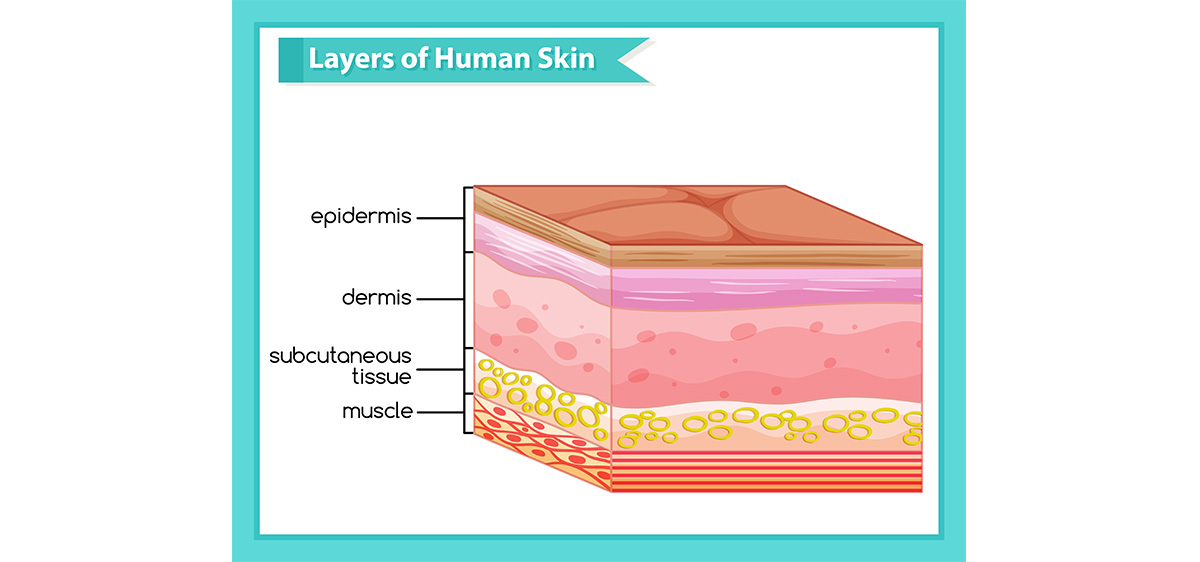Blog
October 4th, 2020
Skin layers and the main causes of skin dryness and scaling
Our skin is our first line of safeguard against disease-causing microbes and toxins and serves as the interface between our internal aqueous environment and the outer dry atmosphere. Keeping up or recouping a youthful appearance is driven by the desire for healthy, great-looking skin, regardless of age. Critical advances being made in skin research implies that the means that today’s cosmetic formulation scientist requires would need practical information on the essential standards of skin science and skincare. Skin is complex and multifunctional, containing various layers and many specific cells that are adjusted to various capacities.

The epidermis is the outermost layer of our skin. It is the primary boundary among us and the outside world. This external surface of the skin contains several layers; the basal cell layer, the spinous cell layer, the granular cell layer, and the stratum corneum.
The dermis is the deep layer, forming the main bulk of the skin. The dermis is the layer responsible for the skin’s structural integrity, elasticity, and resilience. The key types of cells in the dermis are fibroblasts, which synthesize collagen and elastin and other structural molecules. To know more about the effect of collagen and Elastin click here.
The Hypodermis or subcutaneous layer is the deepest layer of the skin is the layer of subcutaneous fat, and its thickness fluctuates in various regions of the body. The dominating type of cells in the subcutaneous tissue are adipocytes or fat cells. Subcutaneous fat goes acts shock absorber and heat insulator, shielding hidden tissues from cold and mechanical injury. The loss of subcutaneous tissue, frequently happening with age, leads to facial sag and highlights wrinkles.
At the epidermis, the principal function of the Stratum corneum (SC) layer is to restrict the loss of water to the external environment. Although the SC forms only the outermost layer of the epidermis, it fulfills this role remarkably well. An alteration of the barrier (by repeated exposure to surfactants, for instance) can cause an increase in transepidermal water loss (TEWL) to the extent that water is lost faster. This results in the horny layer drying out, thus precipitating dry skin conditions. Symptoms of dry skin include The dry areas are generally itchy.
Water in the SC controls its softness and flexibility, a hydrated stratum corneum is flexible and
pliable, while a dehydrated SC is rigid, dry, and cracked.
The water content range of SC is somewhere between 10% and 20% by weight. At the point when moisture content of the skin drops under 10%, it starts to feel “dry”. Water in the skin contuniually evaporates into the air. When the humidity in the air is over 30%, the water that evaporates is replaced by water delivered to the skin. With lower humidity, however, the evaporation of water from the skin increases, and replacement mechanisms cannot keep up resulting in dry skin.
Air conditioning and heating systems are common causes of low humidity. Other factors that increase the loss of moisture from the skin are exposed to high winds and excessive sun exposure. The two major components of the SC that allow it to control TEWL are the natural moisturizing factor (NMF) and the lipids. The NMF is a complex mixture of water-soluble compounds that can bind water. It is made up of amino acids, urea, pyrrolidone carboxylic acid, lactic acid, sugars, peptides, etc.
The SC also contains intercellular lipids to control TEWL. These lipids including ceramides, cholesterol, and fatty acids, form the mortar that surrounds the layers of the cells in the outer epidermis. Surfactants in the cleansers and soaps absorb on to surfaces and therefore will interact with biological membranes such as the skin. In doing this, surfactants defat the skin by emulsification of the lipids which results in an increase in TEWL and permeability for chemicals. Besides, surfactants may be absorbed onto and denature proteins (keratin) in the stratum corneum which results in marked changes in their structure and function. The resultant effect is a skin that is dry, rough and scaling which we generally consider as skin damage.
By keeping the balance of natural moisturizing factors and the level of lipids and precisely ceramides, we would be able to ameliorate and repair the skin damage caused by the frequent use of cleansers and external aggressions. To know more about our solutions for targeting the cause of skin dryness and scaling, please click here.

